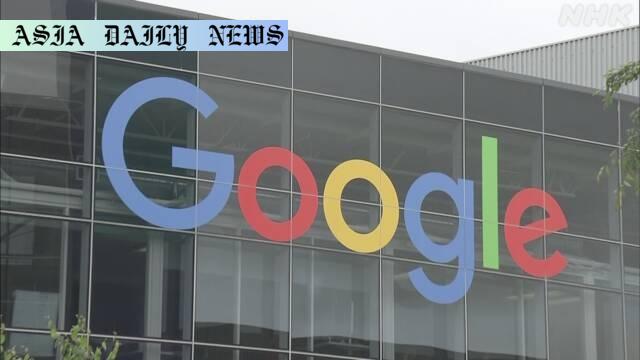Google Groups risks: personal information of users exposed online due to misconfigured settings, raising security concerns.
- Key Point 1: Google Groups exposed personal information due to misconfigured settings.
- Key Point 2: Data from labor unions and medical institutions was publicly accessible.
- Key Point 3: Google recommends administrators review group privacy settings.
- Key Point 4: Expert advises users to remain cautious when using free services for sensitive information.

Google Groups: An Overview and the Emerging Risks
Google Groups, introduced in the 2000s, was designed as a free platform to allow organizations, businesses, and individuals to share files and manage communications within a group setting. While the service initially served its purpose effectively, recent revelations regarding significant security lapses have cast a shadow over its usefulness. The service has come under scrutiny after reports indicated that sensitive personal information belonging to thousands of users became publicly accessible due to misconfigured privacy settings.
Personal Information Made Public
NHK found that emails and sensitive data shared in certain Google Groups were accessible to the public on the internet. Alarmingly, affected groups included labor unions such as those belonging to Japan Airlines (JAL) and public medical institutions in Osaka. For example, the JAL labor union’s group settings inadvertently exposed over 2,500 members’ names and mobile phone numbers, while at an Osaka medical institution, patient symptoms and other private medical records were accessible to anyone. This breach revealed serious gaps in the group’s privacy enforcement and highlighted the risks of relying on insufficiently secure platforms for managing sensitive information.
Changes to Defaults and Persistent Oversights
This issue is not entirely new. In 2013, similar concerns arose when it was discovered that the emails of Japanese government officials could be accessed due to Google Groups’ default setting, which allowed unrestricted public access. In response, Google adjusted the platform’s default privacy settings to restrict access. However, many groups that were created before this update or that have not thoroughly reviewed their settings continue to customize configurations that allow outsiders to view data without restriction. These persistent oversights often stem from the administrators’ lack of understanding of the platform’s mechanics or their failure to recognize the risks posed by open settings.
Advice for Better Security Management
Ritsumeikan University Professor Uehara Tetsutaro, an information security expert, emphasized the need for caution when using free services such as Google Groups. Users should carefully verify that their settings restrict access to sensitive information, ensuring that only intended recipients or group members can view content. Google itself has reiterated that administrators should regularly review and adjust privacy options to avoid unintended exposure of data.
Implications for Privacy and Best Practices
The case not only highlights vulnerabilities in Google Groups but also underscores wider concerns about how organizations handle user and patient information. Businesses, institutions, and administrators are urged to adopt stricter practices when managing group communication platforms. Comprehensive training on cybersecurity practices and effective oversight mechanisms are necessary to prevent such breaches in the future. The incident is a call to action for organizations to prioritize data protection and remain vigilant about the tools they use to share and store sensitive information.
Conclusion: The Importance of Digital Vigilance
As the digital age progresses, tools like Google Groups offer convenience but come with their own set of risks. While the platform is designed to enable users to manage their own data, misconfigurations, and human error can lead to serious repercussions, as seen in this incident. Organizations must recognize the importance of enforcing robust privacy protocols and conducting regular audits of their digital platforms to ensure their security. Effective use of such platforms requires a proactive approach, where users and administrators remain committed to upholding the highest security standards.



Commentary
The Critical Role of Privacy in Digital Platforms
The recent issue surrounding Google Groups serves as a stark reminder of the importance of ensuring privacy and security in our increasingly digital world. As more individuals and organizations rely on online platforms to facilitate communication and share information, the potential for misuse or accidental exposure of sensitive data grows. The mismanagement of privacy settings, as evidenced in this case, illustrates the crucial need for proper oversight when using free services to protect personal and sensitive information.
Rising Concerns and Responsibility
What makes this situation particularly concerning is the sensitive nature of the leaked data. From labor union member details to confidential medical records, the consequences of such a breach can have far-reaching implications. People place trust in institutions to safeguard their information, and when that trust is broken, it can lead to reputational damage, lawsuits, and a loss of confidence in digital platforms. This underscores the need for organizations not only to adopt robust privacy practices but also consistently educate their employees and administrators about the risks of data exposure.
Lessons for the Future
In response to incidents like these, it becomes clear that a proactive approach to cybersecurity is necessary. Tools like Google Groups are powerful but require careful configuration to ensure optimal security. Organizations must make reviewing and updating their systems a top priority, especially when dealing with sensitive information. This should be coupled with ongoing training and awareness programs to equip users with the skills needed to identify and mitigate potential risks.
Concluding Thoughts
Ultimately, incidents like this highlight the delicate balance between technological convenience and security. While free services offer a wealth of possibilities, they should not come at the expense of privacy. By fostering a culture of digital responsibility and vigilance, individuals and organizations can better navigate the complexities of the digital landscape while protecting the well-being of all stakeholders involved.